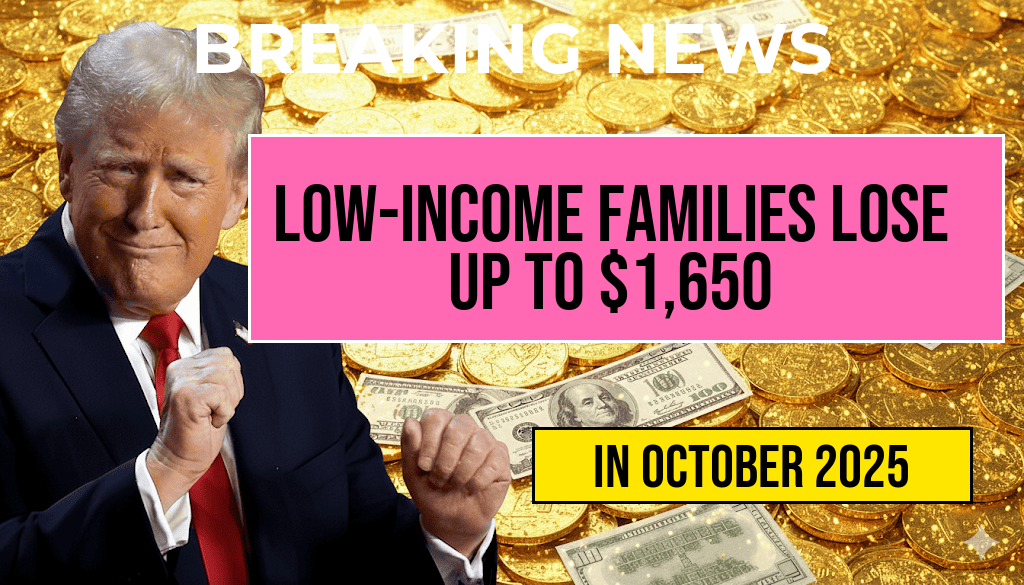Many low-income families across the United States are facing significant financial challenges following recent policy changes that could reduce their household incomes by as much as $1,650 per month. These adjustments stem from a series of federal and state-level reforms aimed at scaling back social support programs, tightening eligibility criteria, and restructuring benefit calculations. For millions already struggling with rising living costs, these policy shifts threaten to deepen economic hardship, potentially pushing families further into poverty. Experts warn that the cumulative impact could hinder access to essential services, increase debt burdens, and impair long-term economic stability for vulnerable populations.
Policy Changes and Their Scope
Federal-Level Reforms
The recent federal policy modifications primarily target major social safety net programs such as the Supplemental Nutrition Assistance Program (SNAP), Temporary Assistance for Needy Families (TANF), and housing subsidies. The U.S. Department of Health and Human Services (HHS) announced tighter income eligibility thresholds and new work requirements that could disqualify thousands of families. According to official estimates, these measures could result in a reduction of benefits worth approximately $300 to $650 per household monthly, depending on family size and location.
State-Level Adjustments
Several states have adopted additional measures to cut costs by modifying state-run assistance programs. For instance, some states have increased work requirement enforcement for SNAP recipients, while others have reduced benefit caps or eliminated certain allowances. The cumulative effect of these state policies could further lower household incomes by an estimated $1,000 to $1,650 per month for some families, according to recent analyses by the Urban Institute.
Impact on Low-Income Households
| Family Size | Pre-Policy Income | Post-Policy Income | Estimated Reduction |
|---|---|---|---|
| Single Parent, 2 Children | $2,200 | $550–$850 | $1,350–$1,650 |
| Two Adults, 3 Children | $3,500 | $1,850–$2,600 | $900–$1,650 |
| Single Adult | $1,800 | $150–$550 | $1,250–$1,650 |
For families relying heavily on assistance programs, these reductions could mean the difference between meeting basic needs and facing food insecurity, unstable housing, or inability to afford healthcare. The National Low Income Housing Coalition emphasizes that such income drops threaten to exacerbate homelessness and housing instability for already vulnerable populations.
Community and Advocacy Responses
Legal Challenges and Public Outcry
Several advocacy groups and legal organizations have launched efforts to challenge the policy changes, arguing that they violate protections for low-income families and undermine efforts to reduce poverty. The American Civil Liberties Union (ACLU) and other civil rights organizations have filed lawsuits in multiple states, asserting that the reforms disproportionately harm children and marginalized communities.
Policy Alternatives and Support Measures
In response, some policymakers and community leaders are proposing targeted measures to mitigate the impact, such as expanding earned income tax credits (EITC), increasing minimum wages, and providing emergency rental assistance. Nonprofit organizations are also mobilizing to offer temporary support, including food banks, housing aid, and job training programs designed to help families regain financial stability amid these policy shifts.
Long-Term Economic Implications
Potential Rise in Poverty and Inequality
Economists warn that sustained reductions in household income could have ripple effects on local economies, as decreased consumer spending affects small businesses and job markets. The Congressional Budget Office (CBO) highlights that reduced access to nutrition and housing assistance can lead to higher healthcare costs down the line, as malnutrition and unstable living conditions contribute to chronic health issues.
Broader Social Consequences
Experts caution that these policies could deepen existing disparities, particularly among minority populations who are overrepresented in low-income brackets. The potential increase in child poverty rates may also hinder educational attainment and future earning potential, perpetuating cycles of poverty for generations.
As debates continue over the appropriateness and scope of social safety net reforms, affected families, advocacy groups, and policymakers are closely monitoring the outcomes. For more information on social programs and support resources, visit the Wikipedia page on social welfare in the U.S..
Frequently Asked Questions
What is the main impact of the new policies on low-income families?
The new policies could result in an income reduction of up to $1,650 annually for low-income families, affecting their financial stability and ability to meet basic needs.
Which families are most affected by these policy changes?
Low-income families across various income brackets are most impacted, especially those relying on government assistance or with limited earning capacity.
How will the income reductions affect access to services and benefits?
The income reductions may lead to decreased eligibility or reduced access to public services and benefits, such as housing assistance, healthcare, and food programs.
Are there any measures to help low-income families cope with these changes?
Some local programs and federal initiatives aim to provide support and resources to assist low-income families in managing the financial impact.
When do these policy changes take effect?
The new policies are set to be implemented starting from [Insert specific date], so families should stay informed about upcoming changes and available assistance programs.






